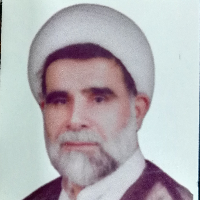An Analysis of Personification in the Holy Qur’an
Author(s):
Article Type:
Research/Original Article (دارای رتبه معتبر)
Abstract:
The Holy Qur’an has in different forms given human attributes to certain objects, which greatly help the audience in a more effective grasp of meaning. The abundant occurrence of personification in the Holy Qur’an, the various styles it is employed in and the weighty meanings conveyed through it, which are some of the requirements for a full understanding of the Revealed Word, demanded the present research that aims to find the types of personifications employed in the Qur’an by adopting a descriptive–analytical approach and to investigate the different semantic aspects, the methods of application and the rhetorical mysteries and motives of this device. The results show that in order to communicate the meaning, certain objects are endowed with human attributes in many ayahs in different ways. In this regard, the culture, experience and life circumstances of the Arabs as well as their popular literary tradition such as employing similes, metaphors, and current metonyms are beautifully manifested in the Qur’an. The important point is that the personifications used in the Qur’an transcend time and place, which is in and of itself one of the causes of the inimitability of the Qur’an..
Keywords:
Language:
Persian
Published:
Literary - Qura'nic Researches, Volume:7 Issue: 4, 2020
Pages:
173 to 199
https://magiran.com/p2136393
مقالات دیگری از این نویسنده (گان)
-
Exegetic Study of Allameh Tabatabai and Seyyed Qutb's View in Explaining Social Justice in Al-Mizan and Fi Zilali al-Qur'an
Nasrollah Shafiei*, Ezzatollah Moulayinia, Seyedreza Moaddab
Journal of The Holy Quran And Islamic Texts, -
بررسی و تحلیل موانع تحقق اهداف فرهنگی امیرالمومنین (علیه السلام) در دوره حکومت ایشان
، مسعود بابائی پیری*
نشریه تاریخ اهل بیت، پاییز و زمستان 1401



